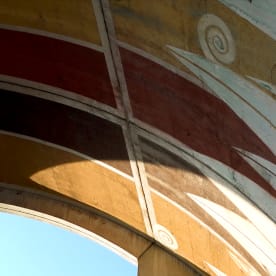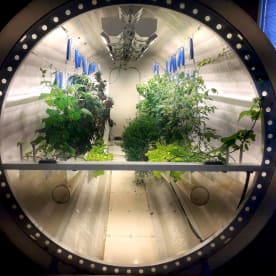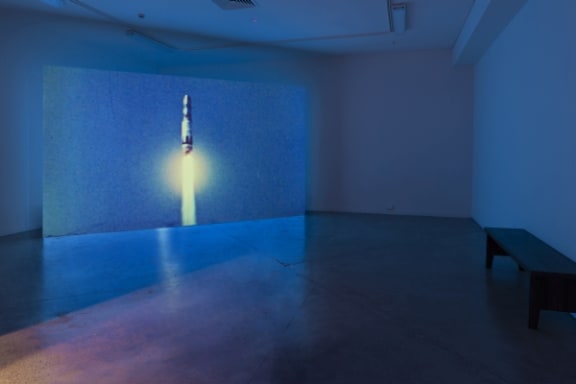Saturday Morning for Saturday 20 June 2020
8:12 How police reform changed one of US’s most violent cities
J. Scott Thomson is the former police chief of Camden, New Jersey. He presided over a major process of reform in one of America’s most violent cities.
In 2012, before the city’s police department was disbanded and then reformed, the city’s murder rate was five times that of neighbouring Philadelphia, and about 18 times that of New York City.
The police reforms have seen a dramatic drop in violent crime. Homicides fell by 50 percent to their lowest level since 1987: overall crime stats dropped even more dramatically. So with many areas of the US (and elsewhere) mulling police reform, what can we learn from Thomson’s experiences in Camden?

J Scott Thomson with Barack Obama Photo: Supplied/J Scott Thomson
8:30 Lotta Dann: how the alcohol industry targets women
Lotta Dann- aka Mrs D- overcame her own problems with alcohol to become sober, and an authority on the understanding of addiction and recovery.
She now manages an online support community called Living Sober, and in her new book The Wine O’Clock Myth she looks at the alcohol industry's efforts to target women. Meanwhile, how has the lockdown, and the general anxiety prompted by the coronavirus pandemic, been affecting our drinking patterns?

Lotta Dann Photo: CATHERINE CATTANACH 2020
0905 Jesca Hoop: American-born singer/songwriter
The American singer-songwriter and guitarist Jesca Hoop has had five solo albums, been mentored by Tom Waits (after working as his nanny), and collaborated with the likes of Eels, Placebo, Iron & Wine, Andrew Bird and Elbow.
She's also a former Mormon and outdoor survival guide. Based in the UK for more than a decade, we’ll ask about the challenges and the opportunities offered by collaboration, and consider some of her shape-shifting, socially aware work.

Jesca Hoop Photo: supplied
9:40 Quantum physicist Andrew Wilson on the fifth state of matter
While working at The University of Otago, quantum physicist (and now expat NZer) Andrew Wilson was part of a team that became the first in the Southern Hemisphere to create the fifth state of matter (after solids, liquids, gases and plasma).
The Bose-Einstein Condensate (or BEC) started out as a thought experiment by the Indian mathematician Satyendra Nath Bose. Later corroborated by Albert Einstein, it took 70 years for laser technology to allow it to be made in the lab for the very first time. This month marks the 25th anniversary of the BEC’s Nobel Prize-winning discovery by Eric Cornell and Carl Wieman.
Now Wilson’s been appointed to lead the quantum physics team at the lab where this work took place: JILA at the University of Colorado at Boulder. We ask him what the discovery of this fifth state of matter has enabled, how the BEC is being used today, and why this month one was created at zero gravity aboard the International Space Station.

Andrew Wilson in his Quantum Physics Laboratory Photo: Supplied/Andrew Wilson

Photo: AUP
10:05 C.K. Stead on his second memoir You Have a Lot to Lose
C.K. Stead is a literary Everyman- a poet, novelist, critic, and activist. His first memoir South West of Eden covered the first 23 years of his life.
His second called You Have a Lot to Lose spans the years 1956 to 1986 and covers the Springbok Tour, his travels and studies abroad, and his relationships with friends and foes including Allen Curnow, James K. Baxter, A. S. Byatt and Barry Humphries.

C K Stead Photo: AUP
10:40 Peter McComb: studying the giant waves of the Southern Ocean
The Southern Ocean can be a cold, fierce and thoroughly inhospitable place, with waves that approach 25 metres in height: that’s the size of an eight storey building!
Oceanographer Peter McComb studies these giant waves of the Southern Ocean and the Ross Sea to make the region safer for fishing vessels, and for the ships of The Royal New Zealand Navy. The buoys he uses to take measurements are usually moored to the seafloor with huge 600 kilo anchors.
But with Australian researchers predicting just last week that a warming climate could make the waves in the region even bigger, one of the buoys has now broken free of its moorings in heavy seas, and is currently drifting eastwards towards South America!
11:05 Tiffany Field: the power of touch in a socially distant world
Professor Tiffany Field is the Director of the Touch Research Institute at the University of Miami. She studies human touch: why we need it, what it can do for us, and how the importance of touch is affected by our cultural background, and by all those smartphone screens.
We discover how her research area’s being affected in this era of social distancing.

Photo: Claudio Schwarz/Unsplash
11:40 Human Hand: Fiona Amundsen and Tim Corballis
Everyone’s had a recent experience of living in a confined space for a prolonged period. Now artist Fiona Amundsen and writer Tim Corballis collaborate on a new exhibition exploring three communities in Arizona that are all in some sense separated from the mainstream.
Featuring film, photos and interviews, the exhibition features Arcosanti (an alternative 1970s micro-city), Biosphere 2 (a closed ecosystem built to test if humans could live in outer space) and the Titan Missile Museum (where Titan 2 missile workers lived together underground during the Cold War).
‘Human Hand’ is a free exhibition on now at The Dowse Art Museum in Lower Hutt that runs until the 11th October.









































